I began by writing the title to my post here by writing “Remembering Bill Jay – Professor, Historian and Fiend“, accidentally missing the R on the keyboard, and as I moved the cursor back to correct the error, I laughed, because Bill Jay (if he has a blog feed of everything we are saying about him in the hereafter) would have laughed as well. He would have quite readily taken the title of Fiend and run with it. He was just the sort of self-depreciating, sarcastic humorist that could find a hearty laugh in any stinging insult one might thrust his way. As I remember him today, I think of the twinkle in his eye that flashed as he smiled and chuckled warmly during almost every conversation I ever had with him and I am convinced that he chuckled again as I misspelled the word friend and instead called him a fiend! But he might prefer a more embellished version of this title: Politically Incorrect British Fiend.
Bill Jay was my mentor and professor during my undergraduate and graduate years at Arizona State University. I was among the very last of his students before he retired and I was privileged to be one of the very last to have him sit on my graduate thesis panel. I took every class he taught, every semester, and when I wasn’t taking classes from him I was in his office listening to his stories about the great photographers of the past. He had met, published work by and knew the sordid tales of more of the great photographer’s lives than most people will even read about in their life time. And every time he spoke, I listened in wrapped attention. In fact, I recall a semester where I did nothing but listen. I think I completely stopped taking notes and just soaked in his ideas.
Bill was famous for his unconventional view of the history of photography and had a talent for pushing buttons across the world of art academia. His lectures and articles were hard to swallow by the artist who surrounded him in the university faculty because his ideas were full of facts and historical documentation. He ridiculed the artist’s natural longing to create by accident and without method or schedule. And discounted the irrational and emotional discussion of art without the grounding influence of history and perspective.
I will recall one article, in which he chided the art community for their hatred of advertising and reverence for art. You know the argument… when an artist finally sells his work to be reproduced on a coffee mug, or a corporate advertising campaign, the other jealous artists who are still working at the ever so non-corporate Starbucks to pay their bills scoff and call him a “sell out”.
When I hear my colleagues pontificate on the purity of art versus the sordidness of advertising I have to wonder at their own grasp on reality. The boundary between art and advertising cannot be erected because there is no dividing line. This has always been true. Art, even so-called Fine Art, is no different in principle or spirit from advocacy. The chances are good that our ancient ancestors, like us, were equally complicitous in the selling/buying pact.
Recently I was reading a turgid tome speculating on the purpose of neolithic cavepaintings, in which the authors were blathering about magic, spiritualism, ritual, psychic connections, shamanistic practices, empathetic resonances, on and on. It seems to me more than likely that Og, hoping to be elected a tribal elder and so have his pick of the meat and women, is boasting of his prowess with spear and bravery on the hunt, and in an effort to sell himself hires Ugh to produce some visuals on the cave wall which when lit by the flickering flames of the fire look like television commercials.
-Bill Jay, Artist Rebells without a Cause
But in this crowd of artists, I and my fellow photo studies graduate students had found a less morose, and more intellectual home with Bill as our father figure, showing us how to step out on our own and do something truly unique in the art world, succeed.
For years after his retirement, I spent many mornings at his favorite diner having pancakes as he ate his eggs, bacon and hash browns talking with him about my latest efforts or listening to more stories about this photographer or that one. He would encourage me to run with one project or another and I always thought, ‘I need to spend more time with Bill, record our conversations and document this man and everything he knows before he leaves us, because at the rate he salts his eggs, he can’t be around for much longer.’ Bill had already had a series of heart attacks, but he swore that life was only worth living if you could live it well. And salt and eggs were part of life.
Soon though, he moved to San Diego for health reasons. (Phoenix is to hot!) And I recall meeting him at his apartment there several years ago, when I presented him with a small portfolio book of my wedding photography. I suppose I presented it to him with the same eagerness my son presents his latest drawings to me. I hoped that my “photographic father” would approve of the work I was accomplishing, even though I knew he probably wished that I had taken a more intellectual path, following in his historical footsteps. But his response both shocked and thrilled me.
Perhaps it was that he had not seen the state of the wedding photography industry, but I like to think it was the work itself to which he was responding. “Jared, this is the most amazing wedding photography I have ever seen.” He continued to tell me how fantastic the images were and that it was great work, for it’s own sake, regardless of who’s wedding it was. It was timeless work, he said, that would be important beyond the client’s spear, like portraits by Avedon or Penn (not that he was putting me on their level) that are important beyond their subject’s immediate use. I was flattered and excited. It was a confirmation that what I was attempting to create in wedding photography and portraiture was something more than images just for the clients who hire me, but images that would be important to anyone who saw them because of the visual and intellectual concepts in the photographs themselves: composition, emotion, shadows and highlights, movement, moments, metaphors, framing, lines, perspective… Perhaps he was more complimentary than was warranted, but Bill was always genuine.
I learned something about myself that day, about where I tend to and should look for accolades. It was his opinion of my photographs that meant more to me than anyone’s, more so than that of another photographer’s, even a master photographer, because it was his considered opinion that stood against changing fads and whims. Because he knew the traditions, the movements and the alterations of the medium, he could see more clearly from a more objective vantage point. It was the validation that my work might stand the test of time that I sought and received from him that day and no award that I can receive in this medium can match that small comment from one of the worlds most treasured photographic historians.
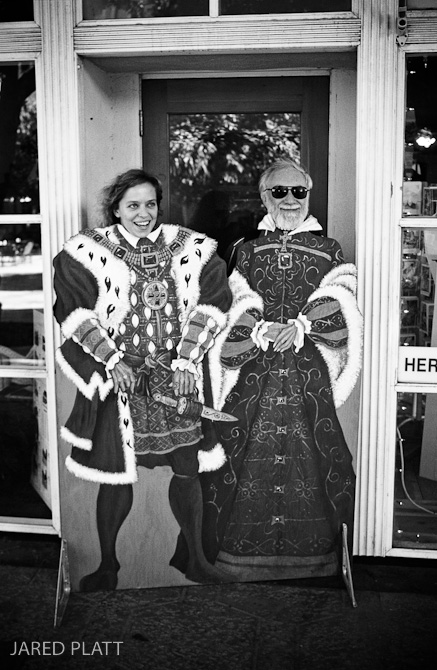
Bill Jay in California with one of his students. Bill took us on extended networking field trips to meet people who may be helpful to our careers in the future. But I think he also just liked being a tourist.
Unfortunately that may have been the last time I saw Bill. We spoke on the phone on occasion, but he soon moved to Costa Rica, where I swore I would go as soon as I could to see him one last time. I somehow knew that he would not be coming back and I missed the chance to see him again before he passed on. I regret that missed opportunity, but his passing doesn’t bring me sorrow. He wouldn’t approve of that anyway, sadness was not in his nature. I have only once seen him with tears in his eyes, and that was for his youngest daughter as we discussed her challenges when she lost her leg in an accident. But I think they might have been part sadness and part pride at her successes. I rarely saw him without a smile on his face, or at least in his eyes. I think that came from the furious curiosity that churned inside him.
He approached the opportunity to gain information with pure excitement and then to pass it on with even greater enthusiasm. He used to tell me, “I have so much to get out into the world, I have plenty of papers in there that haven’t been submitted, just put your name one and get it out into the world.” He wasn’t interested in the credit, just in getting the information out into the world for the benefit of the historical record. I suppose I should have taken him up on that once or twice.
Perhaps the things I write and the lectures I give about photography are still his voice. I found my voice through Bill Jay. It was as though I had found my thoughts inside someone else head and as he spoke I recognized my own thoughts about photography and the world. I don’t know what drew me to Bill, or why I rejected Law School to study with him. Perhaps it was the intellectual and objective approach to the art. Perhaps it was the historian. Perhaps it was the sarcasm. Perhaps it was the funny old englishman and his crazy stories. Perhaps it was his rebellious spirit. His independence. His wisdom. His beard. But whatever it was, Bill Jay was my friend from the beginning and soon became my guide and I hope as he reads his blog feed at St. Peter’s internet cafe’, that he has a good laugh as I call him a Politically Incorrect British Fiend.

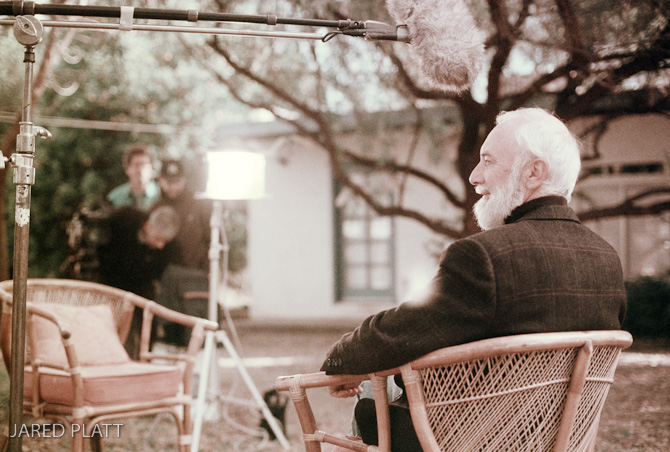
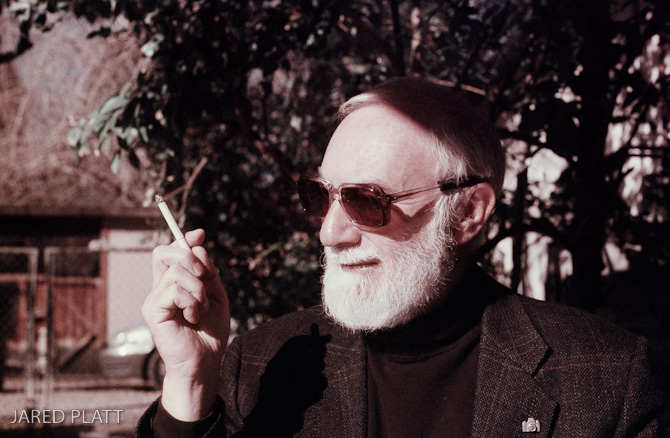
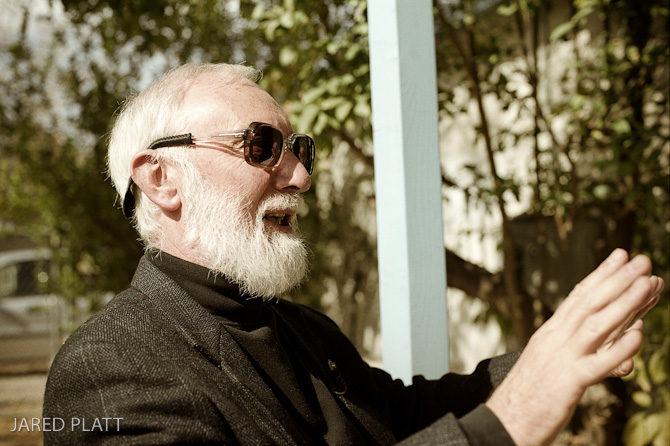
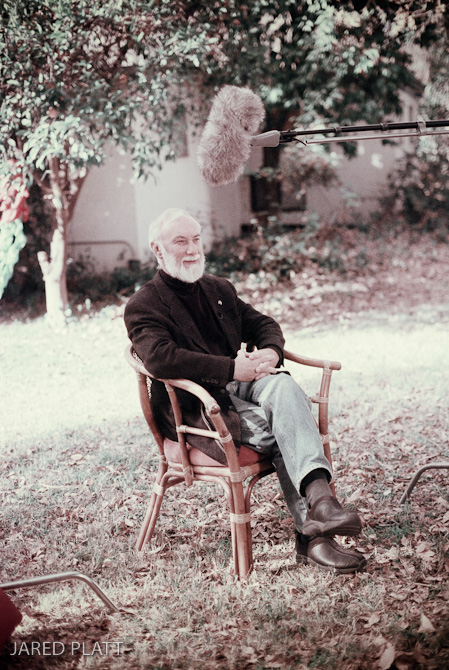


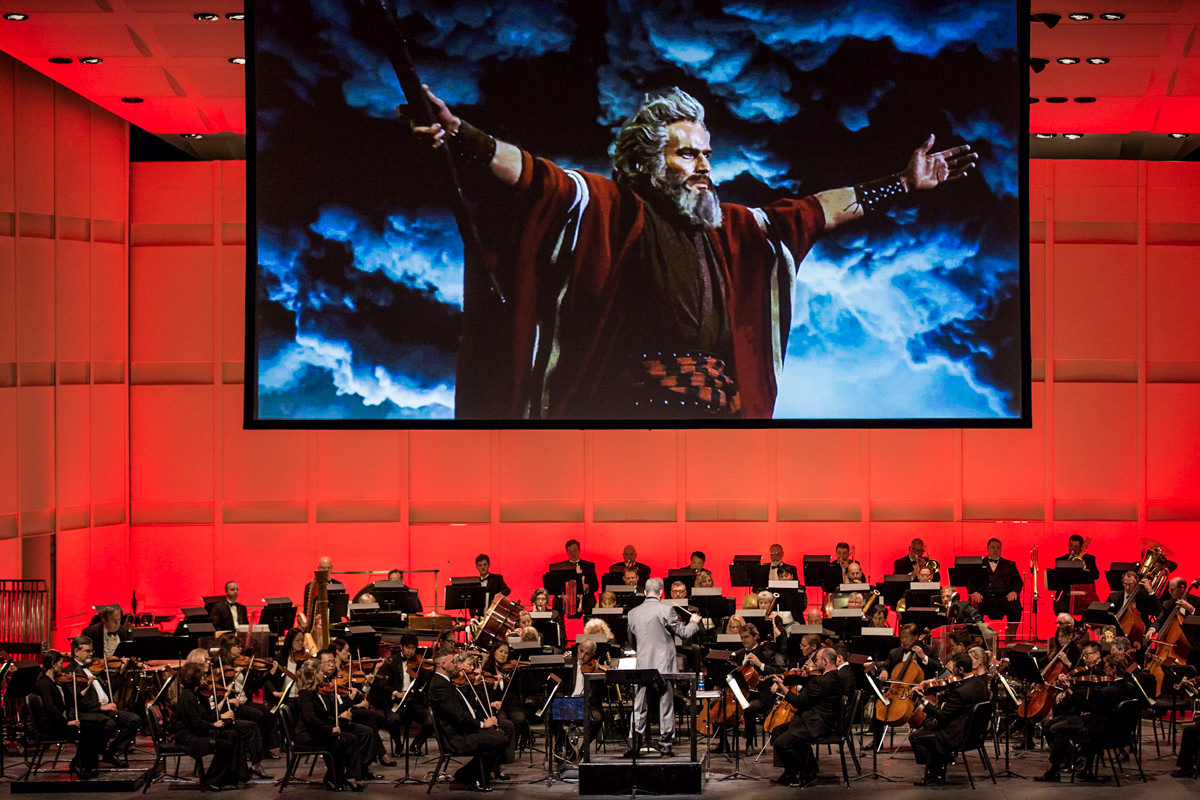
Hi Jared, I was thinking about Bill Jay tonight and wondering how he was doing. I took 2 of his photo history classes at ASU and I LOVED them. I remember looking so forward to meeting my friends and sitting where we always sat and settling in to hear him tell stories about all the photographers of the 20th century. It seemed like he knew all of them! And we loved his British accent! I remember we would follow him out to the landing during the breaks (his smoke break) just to hear more of whatever he had to say. Your writing here for him is beautiful, it’s really a beautiful memorializing of him. I have to say I did not know whether he was still alive or passed on, so I am actually feeling so saddened just reading this. Was it just last summer that he passed away?
Thanks Brenda, Bill meant a lot to me. He was the most important educational figure in my life, although, there have been others as well who shaped my thinking, he was by far the most influential teacher in my life.
Bill was the greatest friend I ever had, we dined out every evening, had coffee every morning and soda every afternoon. But importantly we talked, talked a lot. I said bye to Bill on the Sunday as I was going to the UK for 3 weeks, My wife called me 3 days later to say he was gone. My time in Samara will never be the same, a huge hole has been created which can not be filled
Jared, That was a great story about your mentor. I have to say that I wish now I would have gotten the chance to meet him too. There are people that walk into our lives and change them forever. I’m glad he was one of your’s. 🙂 He’s probably glad to see how many people you also inspire. I totally agree with you on the certification article above, too. I have seen so many people be so cocky in this field, and the most wonderful artists never brag on themselves. That’s humbling to me and I also think it’s the way of musicians too… see my blog about Tim Krekel http://www.melissamannphotography.blogspot.com (June). Happy Clicking!! Thanks for the inspiration today!
What a great appreciation of a fascinating man. I read his BJP article in the 1980s when I was in my teens. I enjoyed his writings enormously and heard him lecture in the UK a few years ago. A true individual and pioneer.